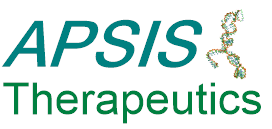
|
©2010–2020 Apsis Therapeutics, INC. All rights reserved. |
|
APSIS owns proprietary bcProtideTM prodrug technology ensuring that the active agent is being efficiently generated within the diseased cells (tumors and infected cells) from its prodrugs.
To minimize cytotoxicity, properties of tissue targeting (i.e. concentration of active drugs in liver tissues based on ProTide strategy), no release of cytotoxic metabolites, and clearance of disrupting nontargeted vital cellular/biological processes (off-target effects) by the prodrug and its intermediates are extremely attractive. bc-Protides deliver nucleoside 5′-phosphates into cells with the expectation of improved cellular uptake by reducing the rotational degrees of freedom with a conformationally constrained structure and blocking the 3′-hydroxyl group to reduce polarity, and also removing toxic phenol or 1-naphthol used in current ProTides.
bc-Protides bypass PDE-mediated hydrolytic activation shared by all 3′,5′-cyclic phosphate and phosphoramidate prodrugs such as PSI-938 (PSI-352938), which may impact the tightly regulated cellular cyclic nucleotide signaling pathways, which are temporally, spatially, and functionally compartmentalized, and result in abnormal intracellular concentrations of cyclic nucleotides (such as cAMP and cGMP), and, consequently, myriad biological responses leading to human diseases. 3′,5′-Cyclic phosphate and phosphoramidate prodrugs may also act as secondary messengers and lead to undesired physiological changes, with their median effective concentrations (EC50) in or close to the range of apparent activation constants (Ka) of protein kinase A (PKA RIβ2:C2, 29 nm; RIα2:C2, 101 nm; RIIα2:C2, 137 nm; and RIIβ2:C2, 584 nm) for cAMP and of protein kinase G (PKG-Iα, 67 nm and PKG-Iβ, 133 nm) for cGMP.
|
